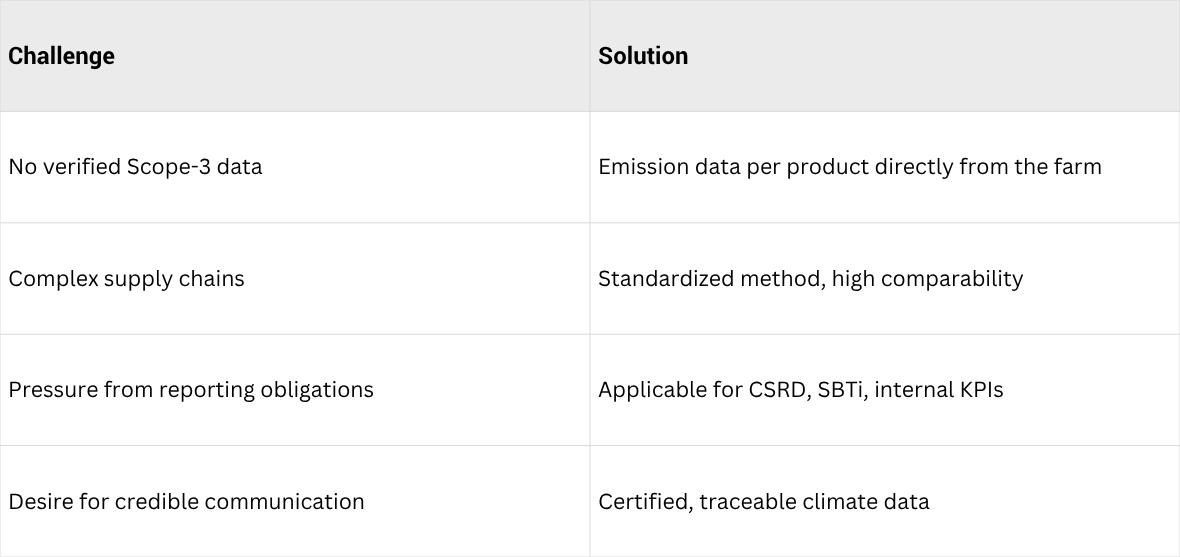
Supply Chain Transparency – Achieve Climate Goals Measurably
Carbon footprint of your raw material suppliers – precise, traceable, effective
Do you want to know the carbon footprint of the products you purchase?
With the World-Climate Farm Tool, you can efficiently calculate the carbon emissions of your agricultural suppliers. This gives you access to carbon data for the products you buy. We handle the entire service for you.
Your Benefits at a Glance
- Achieve sustainability goals: Certified carbon footprints help illustrate environmental impact and support continuous improvement.
- Create transparency: Gain clear insight into the carbon footprint of your purchased products.
- Comply with regulations: Fulfill legal requirements (e.g., CSRD, ESG reporting) with reliable carbon data.
- Build trust: Verified carbon reporting strengthens the credibility of your sustainability communication.
- Gain a competitive edge: Companies with sustainable supply chains position themselves credibly and future-ready in the market.
How Does Carbon Footprint Work?
Your agricultural suppliers calculate their carbon footprint in collaboration with us. You receive the results, including the footprint of the products you purchase. The World-Climate Farm Tool is based on internationally recognized methods and accounts for all climate-relevant aspects of agriculture.
Getting Started – Three Simple Steps
- Get in Touch & Schedule a Consultation
We’ll show you how the tool can be applied in your supply chain. - Identify Suppliers & Gather Data
You select your raw material suppliers, and we handle their carbon footprint calculation. - Use the Results & Reach Your Climate Targets
You receive the results along with insights into climate action already taken by the farms.
Your Advantages at a Glance

Successfull partnerships

AgroImpact
The World-Climate Farm Tool is now officially recognized by AgroImpact. This means that climate assessments created with the World-Climate Farm Tool can be seamlessly integrated into the AgroImpact system – fully compatible with existing industry standards and evaluation frameworks.
Added value for farms: They benefit twice – through reliable climate data and the opportunity to receive climate premiums for greenhouse gas (GHG) reduction or sequestration.
New: Entry into the AgroImpact system is now possible even without soil diagnostics – using a comprehensive farm assessment via the World-Climate Farm Tool. This makes access to climate premiums even easier.

Barto
In the coming months, the World-Climate Farm Tool will be integrated into the Barto Farm Management System. This will allow farms to directly use their operational data available in Barto for climate accounting in the future.
